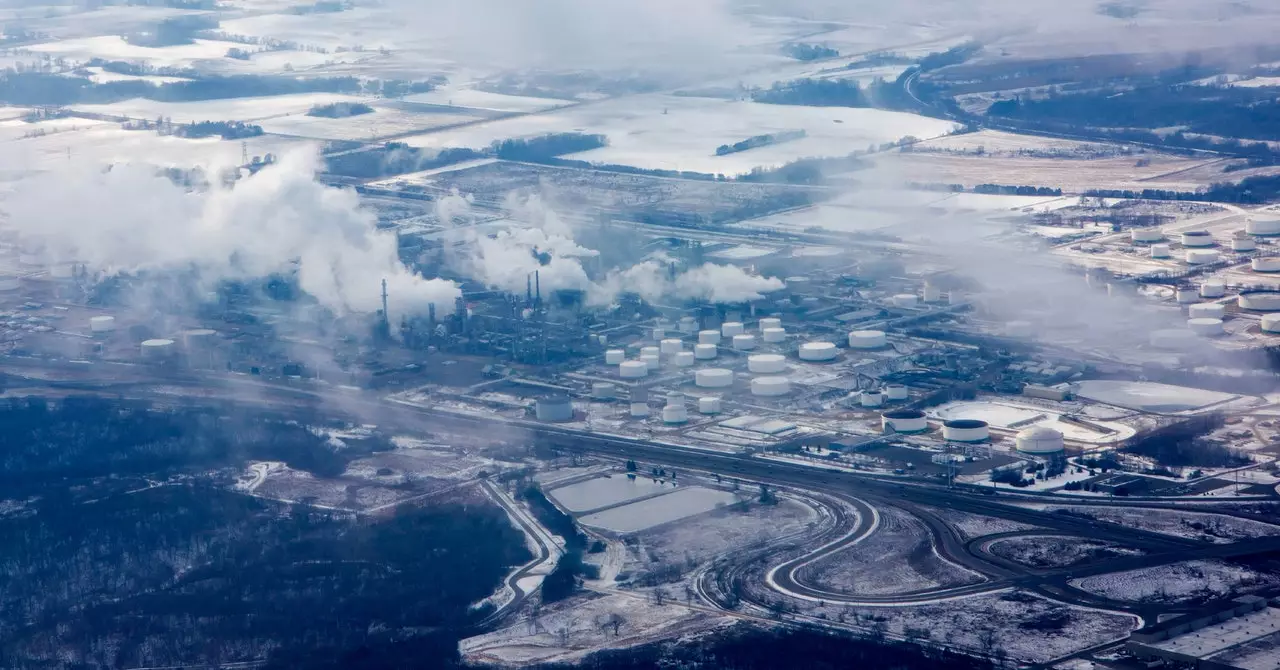The development of sustainable aviation fuel (SAF) represents a critical step in reducing the aviation sector’s carbon footprint. As air travel continues to grow, the shift towards greener alternatives is no longer merely a progressive option; it has become a necessity. One promising initiative is emerging from Rosemount, Minnesota, where the Pine Bend Refinery, owned by Koch Industries, plans to become a key player in the SAF market.
Situated just 13 miles from the Minneapolis–St Paul International Airport, this refinery is poised to begin blending SAF produced from renewable feedstocks with conventional jet fuel. According to projections, by 2025, this innovative fuel mix could deliver up to 60 million gallons of blended fuel, potentially composed of 50 percent SAF. Supporters of the project, including financial backers Deloitte and Bank of America, have grand ambitions, envisioning the production of a staggering 1 billion gallons of SAF annually. Not only would this output meet the local airport’s demands, but it could also supply SAF to additional airports across the nation and beyond.
Challenges Ahead: Political and Financial Uncertainty
However, this ambitious endeavor faces significant challenges. The foundation for the SAF industry is heavily reliant on financial support mechanisms, such as tax credits and loans, which were initially established under the Biden administration’s 2022 Inflation Reduction Act. As political dynamics shift, the risk of losing these vital incentives looms large.
Recent statements from key players in the SAF market, such as Montana Renewables, the company slated to provide the initial SAF batches to Pine Bend, indicate troubling delays in securing essential funding from the Department of Energy. Reports suggest that a crucial $782 million segment of a $1.67 billion loan is undergoing a “tactical delay” to ensure alignment with current White House priorities. Political pressures and administrative changes could potentially jeopardize financial commitments that are essential for the project’s viability.
As Scott Irwin, a noted agricultural and consumer economics professor at the University of Illinois, points out, the solar financial supports that previously energized the SAF initiative may be “on life support.” Without government backing, the promising path for SAF could stall, limiting progress to local and state programs that may not possess the muscle or funding to replace federal support. Irwin’s assertion that “without the incentives in the Inflation Reduction Act, SAF is dead in the water” encapsulates the precarious situation that faces the emerging SAF industry.
Compounding the financial concerns are the technical barriers in scaling up SAF production. Jake Reint, vice president of external affairs for Flint Hills Resources, which oversees the Pine Bend facility, highlighted issues related to operational readiness. The project necessitates specialized equipment, such as specialty pumps, required for blending SAF with conventional fuels. These components are subject to lengthy delivery timelines, which hinge on thorough planning and precise demand forecasting.
The project must navigate a complex landscape, incorporating a wide array of stakeholders, from governmental bodies to corporate entities involved in fuel distribution. Moreover, the prospect of working with external suppliers like Shell to transport SAF adds another layer of operational complexity to an already ambitious project. The looming uncertainty surrounding both political support and technical logistics raises critical questions about the future of the SAF initiative in Minnesota.
Given the current turbulence in both political and funding streams, it is crucial for stakeholders in the aviation and energy sectors to advocate for the continuation and expansion of supportive policies that foster the growth of sustainable fuels. The success of the Pine Bend project and similar initiatives may hinge on their ability to influence policymakers and secure commitments that align with sustainability goals.
As the race towards greener aviation intensifies, stakeholders must prioritize collaborative strategies that ensure long-term viability for SAF production. The transformative potential of this sector is immense, but the path forward is fraught with difficulties that require coordinated effort and unwavering commitment from all involved. Embracing innovation while addressing obstacles will determine whether the aviation industry can successfully navigate its green transition.

